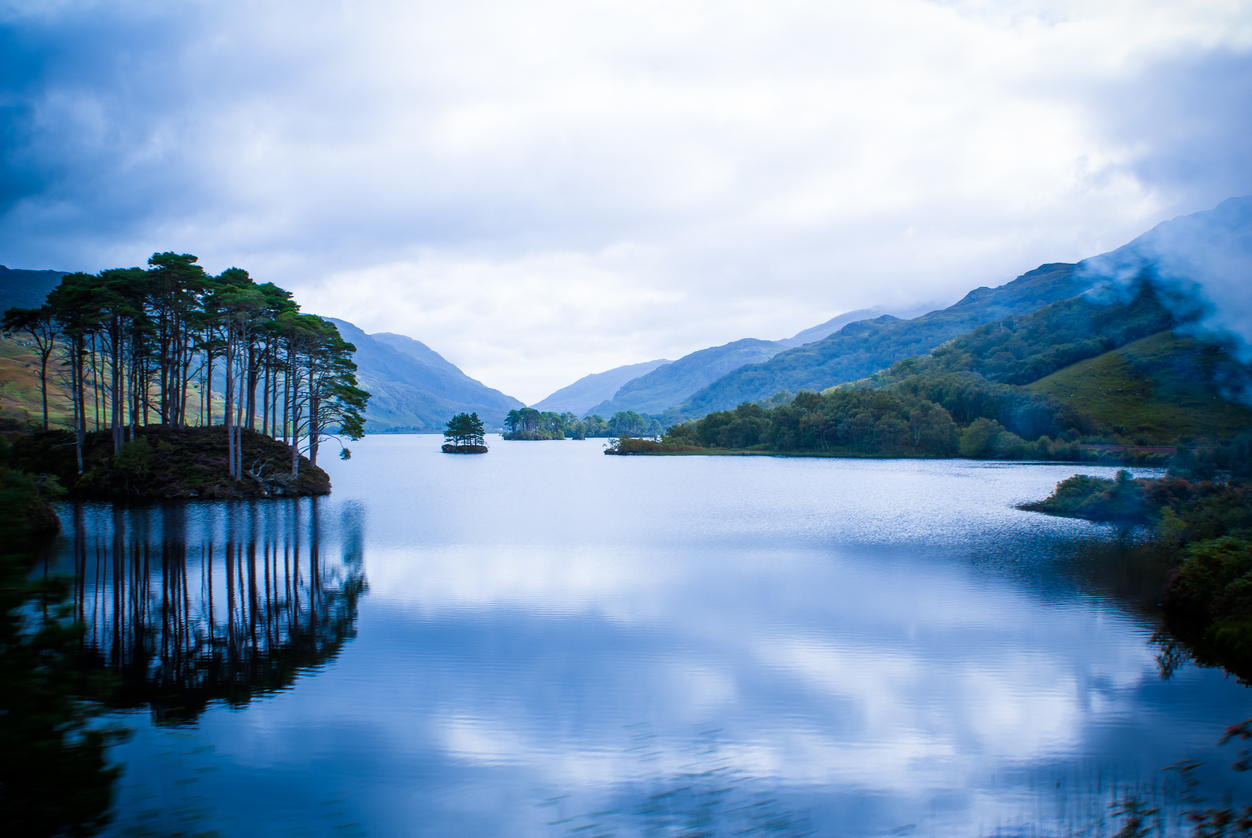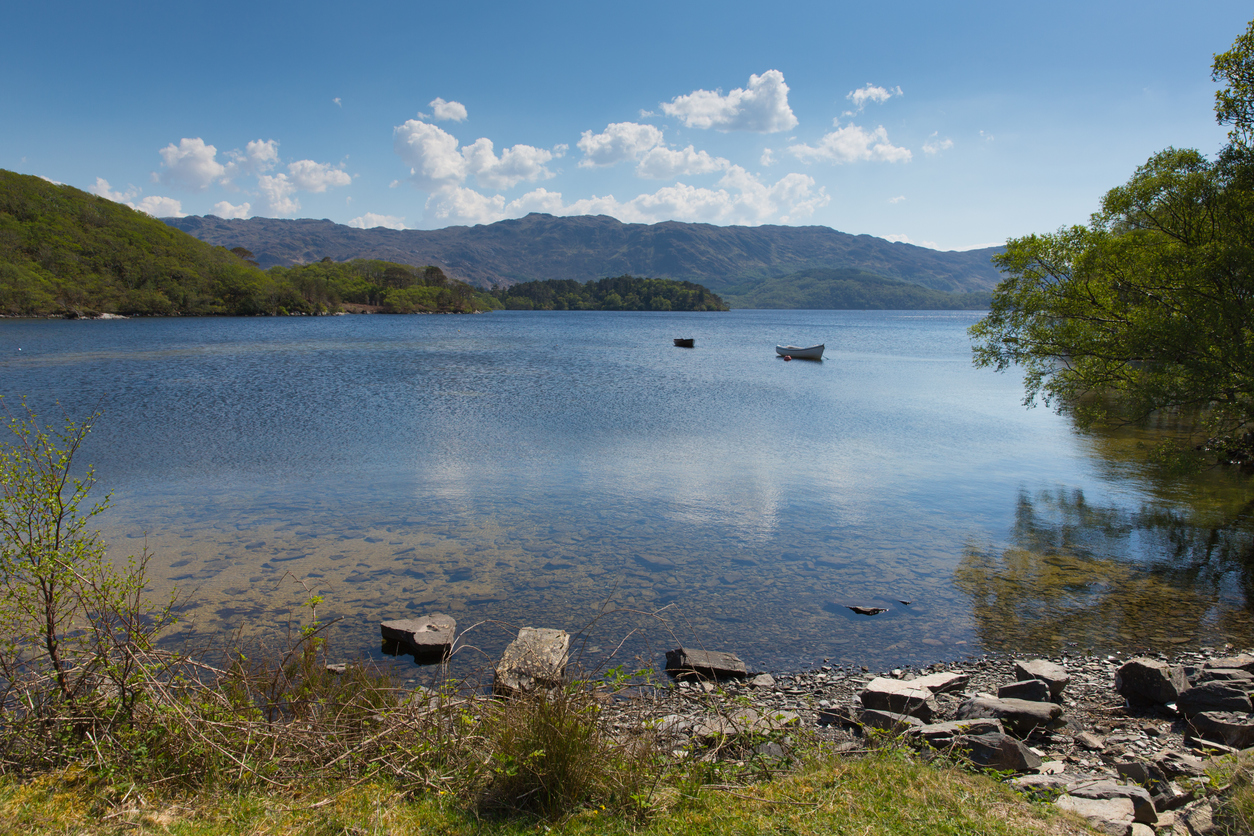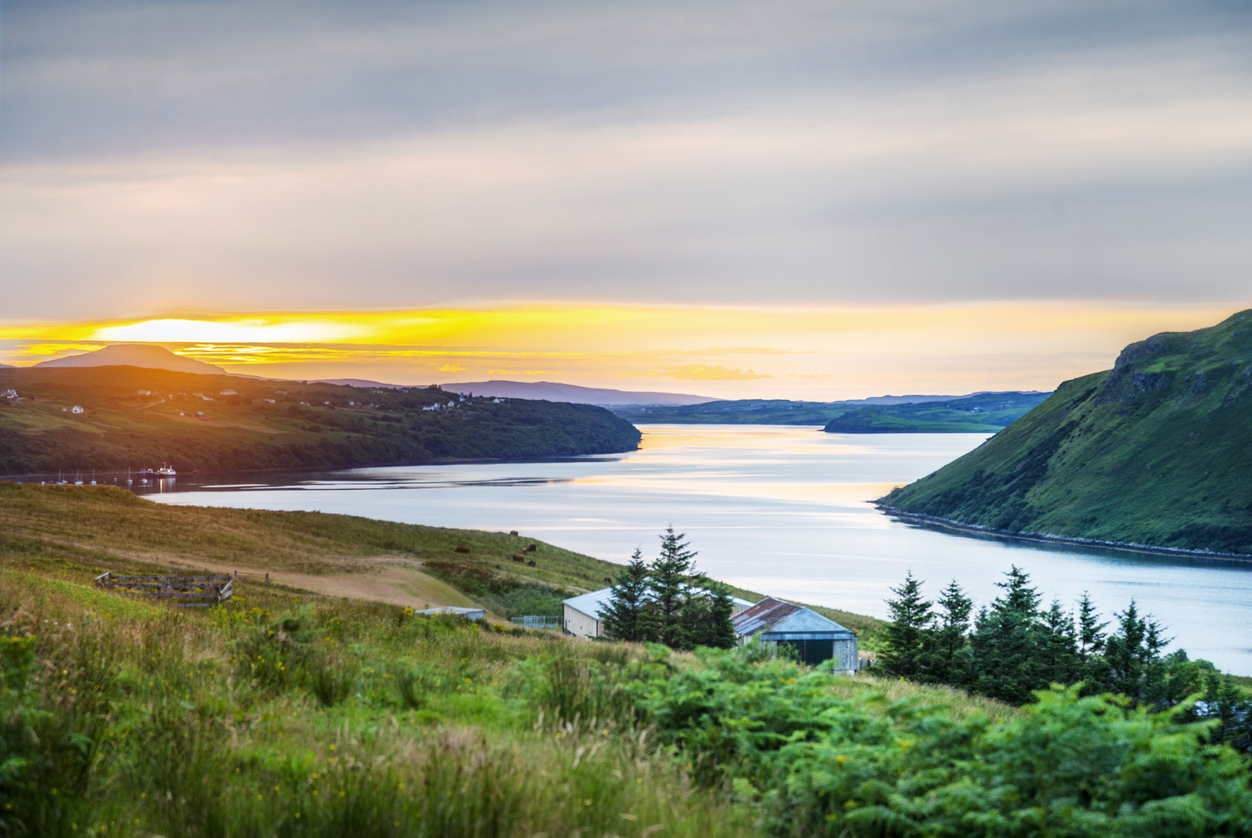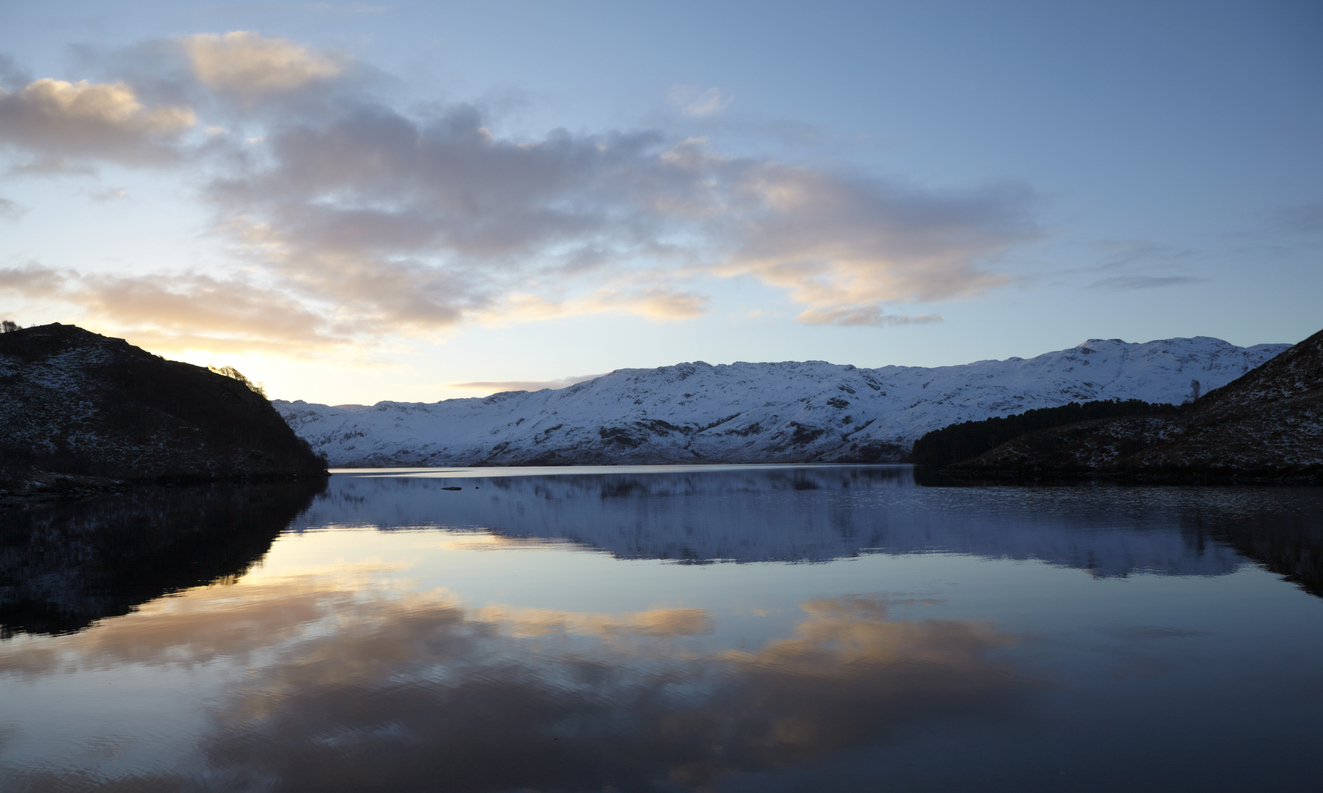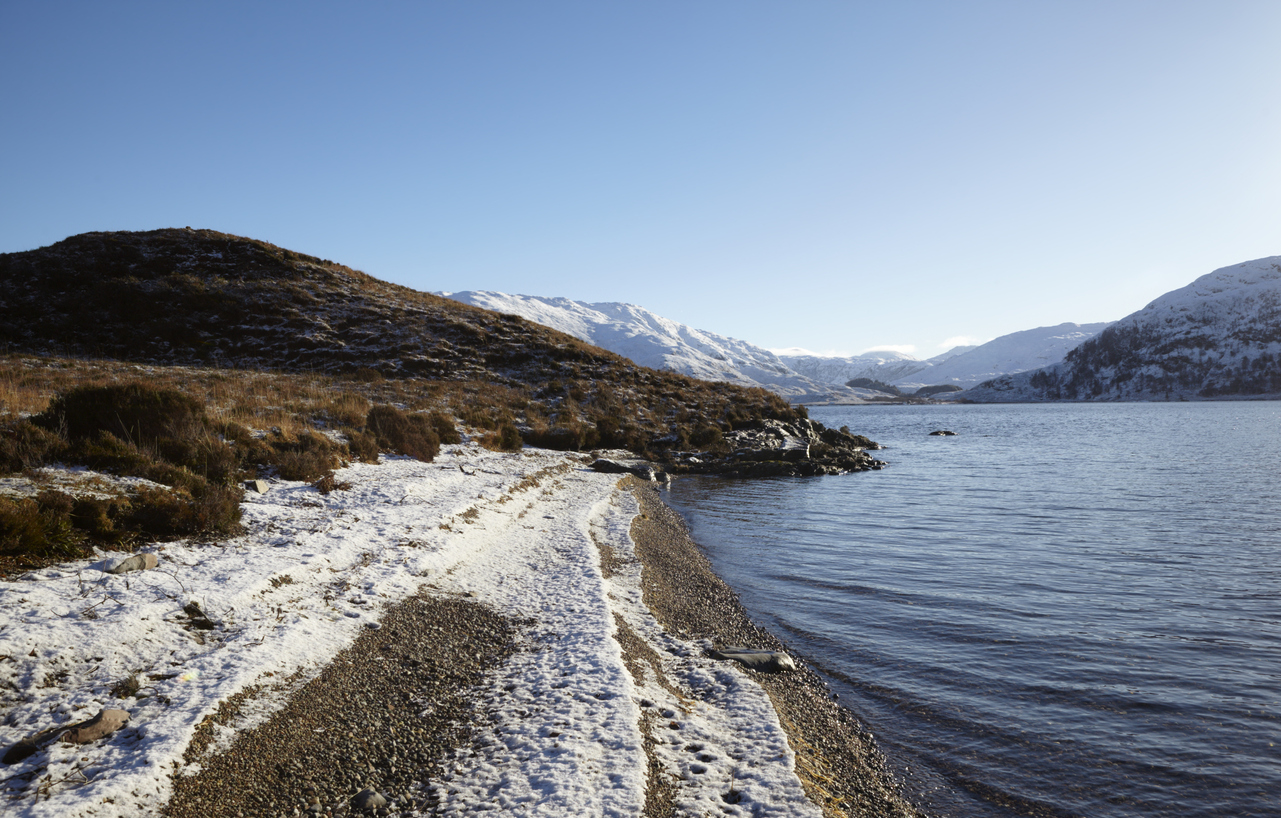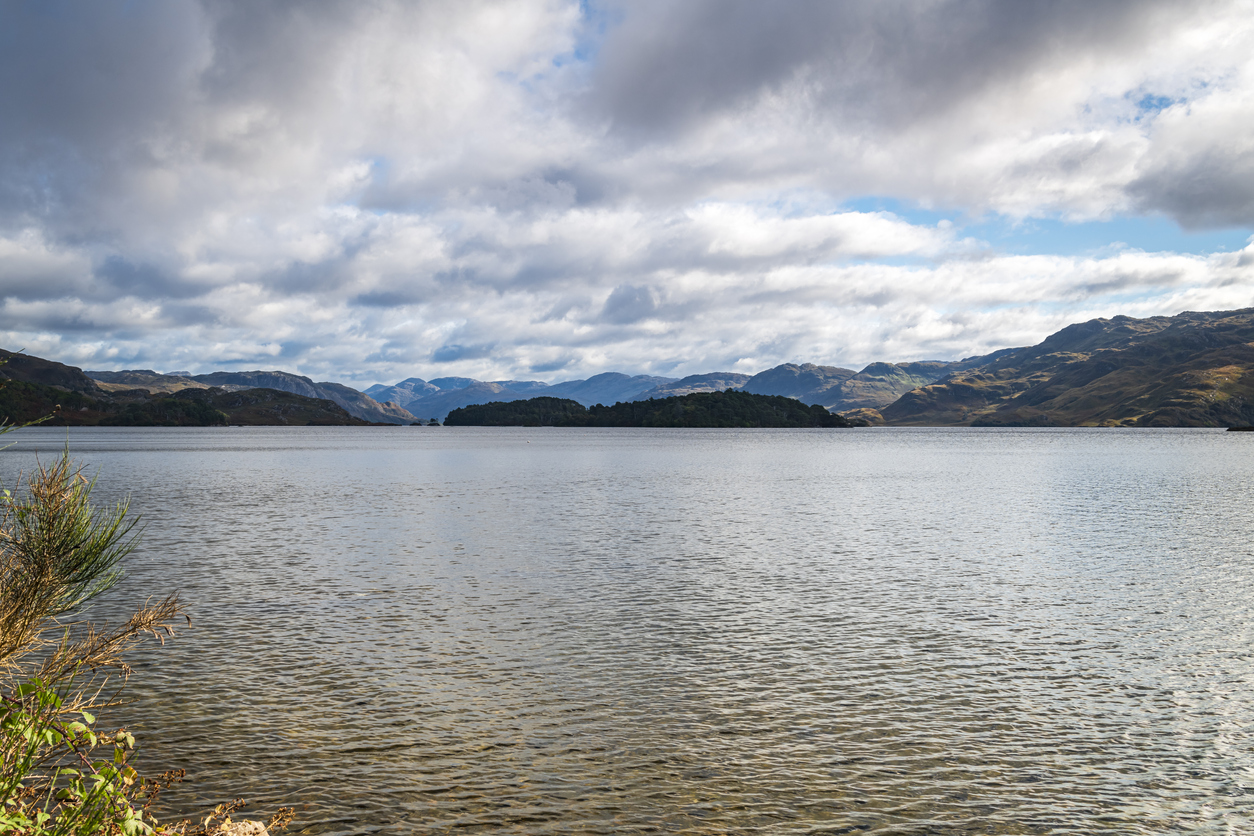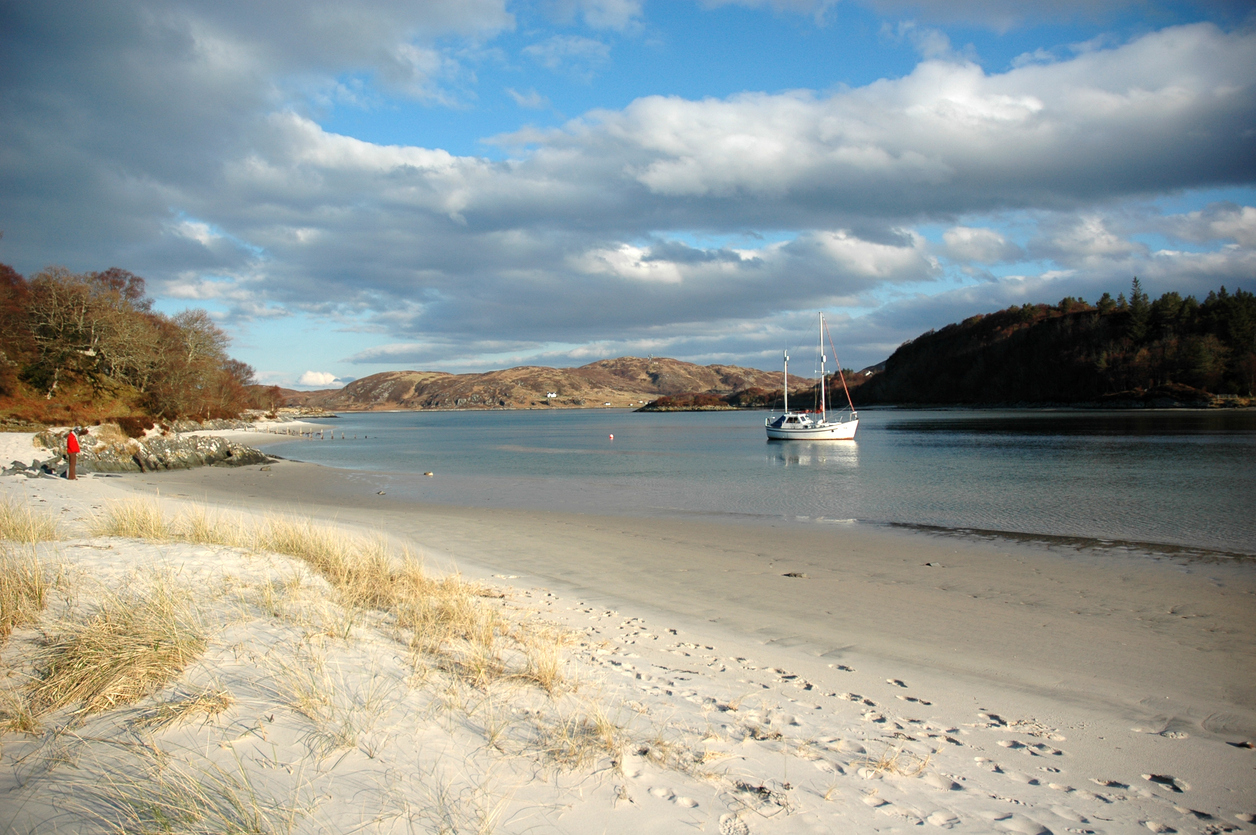Loch Morar is located in the rugged northwest highlands of Scotland, nestled amongst some of the country's most breathtaking mountain scenery. Known as Scotland's deepest freshwater loch with a maximum depth of 310 metres (1,017 feet), Loch Morar stretches for roughly 16 kilometres southwest to northeast, carved out by ancient glaciers during the last Ice Age. The loch's pristine waters create a striking contrast against the surrounding landscape of steep hills and woodland, making it an incredibly scenic destination for visitors. Adventurers from around the world come here not only to marvel at the natural beauty and serenity but also in hopes of catching a glimpse of Morag - Loch Morar's legendary monster.
Visitors travelling to Loch Morar will find themselves traversing miles of winding single-track roads that cut through forests and hillsides, with panoramic views opening up at every turn. The journey itself sets the tone for the awe-inspiring wilderness that awaits at the loch. Upon reaching Loch Morar, many visitors choose to base themselves in the village of Morar, located at the loch's northeastern end. Here, modest accommodations including guest houses and inns can be found to use as the perfect basecamp for exploring everything Loch Morar has to offer.
Outdoor Activities Around Loch Morar
Loch Morar and the surrounding highlands offer abundant opportunities for outdoor recreation and adventure sports amidst totally unspoiled nature. Visitors can choose from a range of pursuits on land and water that cater to all ages and skill levels.
Hiking & Hillwalking
The hills and glens surrounding Loch Morar provide superb terrain for hikers and hillwalkers seeking scenic trails of varying difficulty. Popular routing options include the ascent of peaks like the 2,041 ft Sgurr na Ciche for panoramic loch views that allow more experienced trekkers to take in the full splendour of the valley from elevated vantage points. More casual ramblers can explore the forested shores along Glen Dessarry located on the western banks, or follow the River Meoble as it feeds into the loch's northern tip for flatter winding paths surrounded by the sights and sounds of Highland nature. There are also several family-friendly trails leading to secluded beaches, ideal picnic areas and prime nature-watching spots for those looking to enjoy Loch Morar's tranquillity at ground level.
Watersports on Loch Morar
Getting out onto the water allows visitors to experience Loch Morar's scenic splendour at lake level as they traverse the expanse of Britain's deepest freshwater loch. Canoeing and kayaking are popular ways to take in gorgeous views of the loch, its islands and enveloping mountainscape from an immersive on-water perspective. Travellers can bring their vessels or take advantage of kayak rentals available in Morar village that allow even beginners to safely enjoy hours of relaxed paddling. The daring can test their mettle attempting to cross the loch's entire 16 km length as it stretches from southwest to northeast. Wild swimming is also possible for those brave enough to take the frigid glacial plunge into legendary depths nearing 1,000 feet. Rowboat rentals provide another leisurely, non-motorised option for anglers and sightseers hoping to explore lesser-accessed shorelines and peaceful pockets of the massive loch.
Angling and Boating Excursions
In addition to watersports, many visitors come to Loch Morar lured by the prospects of landing trout and salmon from water whose extreme depths make for elusive trophy catches. Designated fishing points around the loch provide shore access to casting sites, while boat rentals are available for those who want to maximise their chances by accessing prime angling spots farther offshore. Joining a local guide out on the water significantly improves the odds of reeling in catches found only in Morar's untouched fishery. For travellers more interested in wildlife watching than angling, cabin cruisers operated by the Lochmorar Community Company allow leisurely touring focused on soaking up panoramas and spotting ospreys, golden eagles and other magnificent birds that call the loch's islands and forests home.
Fishing Loch Morar's Legendary Waters
The fishing in Loch Morar holds legendary status among anglers thanks to the loch’s extreme depths and abundance of trophy-sized salmon, trout and Arctic char inhabiting the cold, pure waters. Generations of devotees continue flocking here lured by record catches and the prospects of landing a lunker from Britain’s deepest freshwater loch.
Brown Trout Fishing
Loch Morar claims multiple British records for enormous brown trout pulled from its depths over the years. Noteworthy catches include a 23-pound brown trout caught in 1969 by Donald Mackenzie that long stood as the UK record. More recently in 2021, 19-year-old Mattie Currie shattered the decades-old Scottish record by landing a brown trout exceeding 18 pounds on Loch Morar. The loch has rightfully earned fame for being home to some of the Isles’ largest wild trout along with their mysterious deepwater feeding and spawning habits. Tips for landing one involve knowing the best techniques and equipment to tempt these wily lake dwellers that reside in deeper, highly oxygenated parts until nightfall when they rise nearer the surface to feed. Local guides provide invaluable direction in terms of lures, depth, casting spots and timing to hook a monster trout. Diehard anglers also share stories of solitary autumn and winter trips enduring cold, rain and wind in hopes of improved chances when fewer competing lines are in the water.
Salmon Fishing
In addition to monster trout, Loch Morar holds reliably strong runs of wild Atlantic salmon entering from seaward links to migrate up its river tributaries coming off the north slope of the hills. Prime casting spots are located at the mouths of the waters that feed the loch's upper River Morar including the Meoble and Glendessary. Late summer and autumn when spawning salmon make their push offer the most consistent action and a reasonable likelihood of connecting with a 10-15 pounder on light spinning tackle. As a catch-and-release trophy salmon fishery, strict permitting and quotas help protect valuable breeding stocks unique to Scotland's west-flowing rivers. Hiring knowledgeable ghillies helps visitors navigate regulations, purchase required licenses, and get equipped to battle these mighty silver kings of the water as they journey back to ancestral spawning sites.
Joining an Experienced Guide
Given Loch Morar’s vast size, extreme depths, and abundance of structure below the surface, hiring a local expert guide significantly improves one's chances when fishing these fabled waters compared to trying to crack the code independently. Seasoned loch regulars like Kenny Mackenzie, Richard Simpson and Calum Duncan who offer angling services understand the best techniques for specific species and seasons. They communicate directly with other guides about recent catches and prime spots day to day. Most importantly, taking clients out fully equipped on suitable boats allows accessing the most promising drifts and depths far from shore that holds the true monsters. Visitors looking to brave Loch Morar's fishing challenges while boosting their catches should strongly consider booking area guides. Their wisdom accumulated from years on the water proves invaluable when trying to land a fish of a lifetime.
Morag and the Loch Morar Monster Phenomenon
While Loch Morar’s scenic beauty and wilderness recreational draws entice many visitors, the loch’s infamous reputation as home to unidentified creatures occupying the icy depths remains the prime fascination for cryptozoology enthusiasts worldwide. At the heart of this intrigue swirls Morag, Loch Morar’s resident monster whose local sighting accounts and spine-chilling encounters date back over a century.
Origins of the Morag Legend
Stories of an unknown beast lurking in Loch Morar first entered widespread consciousness in the late 1800s as folklore collected across the region described a large, serpent-like creature aggressively defending an underwater lair somewhere within the murky confines of Scotland’s deepest loch. First-hand eyewitness accounts portrayed disturbing brushes with a splashing, snarling creature exhibiting reptilian characteristics like rough, scaly skin along with an ill temper when surfaced. The repeated emergence of these shocking claims from ordinary Highlanders around Loch Morar fueled speculation that primordial beasts indeed inhabited its dark depths.
As tales spread, the nickname “Morag” became shorthand referencing Loch Morar’s monster phenomenon shared by both believers and skeptics alike. While hard evidence proving Morag’s zoological identity remains lacking to this day, credible sightings persist, keeping the question open for debate and continuing to stoke fascination with the legend worldwide. Both lay monster hunters and serious investigators frequently turn their focus toward Loch Morar searching for conclusive data that may finally unmask the nature of Morag once and for all.
Modern Morag Expeditions
Thanks to the growing mainstream popularity of cryptozoology TV shows and web forums, the 21st century has spawned more technology-equipped investigative teams descending on Loch Morar than ever before to uncover the truth about local monster lore. While past hunts relied almost solely on visual surface monitoring and sonar water scans searching large swaths of the 16 km-long lochs, current groups involve specialists in deep-sea exploration, marine biology and underwater surveillance utilising cutting-edge capabilities. Custom submersible robots now provide video documentation of sections below the thermocline where light fails to penetrate and cave openings appear on sonar that previous technology could not reach. More powerful generations of sonar equipment using LIDAR laser scanning recreate detailed subsurface topographical maps down to the deepest points that may hold clues to Morag’s secret dwelling spaces. Ongoing DNA analysis of organic matter and fluids collected at targeted sites represent additional scientific efforts to potentially identify unknown species present in Loch Morar for the first time.
Though questions around Morag’s authenticity remain, the legend itself continues driving public intrigue and research initiatives which over the years have expanded knowledge of Scottish heritage, natural history and resources connected to Britain’s remarkable landscape of lochs.
The Timeless Allure of Loch Morar
While Loch Morar has certainly not escaped touches of modern development and technology, the surrounding region maintains a wonderfully remote feel thanks to both geography and protective preservation. As one of Britain’s last true wilderness destinations, the lack of crowds and simple tranquillity let visitors feel transported back through time. Elements of unspoiled landscape, enduring culture and local heritage all converge to create Loch Morar’s lasting magnetism.
Untouched Natural Landscapes
Much of the loch’s 32 square mile watershed remains close to its original natural state unlike busier tourist destinations, with wildlife roaming freely amid mountain pastures populated more by sheep and shaggy highland cattle than people. Idyllic remnants of oak woodlands dot the hills while golden eagles still soar over peaks their ancestors ruled for ages. Visitors travelling along the winding single-track road catch frequent glimpses of red deer grazing roadside, reminders this terrain belongs to nature first and holds the power to transport one back centuries with sights long preserved.
Living Heritage and Traditions
Beyond just the scenery, a cultural connection to the past permeates the glens through the continuance of the Gaelic language along with long-held customs carried through generations of families rooted here for hundreds of years through history’s upheavals. The remote villages and settlements surrounding Loch Morar appear frozen in time, where the weekly routines of fishing, shepherding, gathering peat fuel from bogs or travelling to market operate much as they have since the 1800s. Locals are happy to share stories, songs and folktales over a whisky that provides the deepest insights into everyday life interwoven with Loch Morar's natural cycles and lore.
Conservation Protection Efforts
Dedicated preservation efforts focused on protecting fragile ecosystems in the Loch Morar watershed ensure responsible wilderness access and low-impact tourism continue for future generations. Conservation charity Woodland Trust Scotland stewards swathes of Caledonian pine avenues and oak woodlands bordering the loch critical to native wildlife. Over 1,650 hectares across the rugged surrounds are also designated Special Areas of Conservation via EU Natural Habitat directives monitoring plant and animal life. Thanks to these measures safeguarding Loch Morar’s cultural and biological diversity, its irresistible call persists through the ages.
From scenery unchanged since the Iron Age to heritage enduring via local crofts and villages, visitors uncover Loch Morar’s legendary pull layer by layer. While modern amenities cater to tourists, they enhance rather than overwhelm a sublime setting and pace of life whereby little feels altered through time across Morar’s glens. The loch's living legacy persists as a rare Scottish jewel drawing travellers searching for golden light and experiences inside Britain’s protected realm of natural wonders.
Related Articles

Let us know you agree to cookies
We use marketing, analytical and functional cookies as well as similar technologies to give you the best experience. Third parties, including social media platforms, often place tracking cookies on our site to show you personalised adverts outside of our website.
We store your cookie preferences for two years and you can edit your preferences via ‘manage cookies’ or through the cookie policy at the bottom of every page. For more information, please see our cookie policy.
